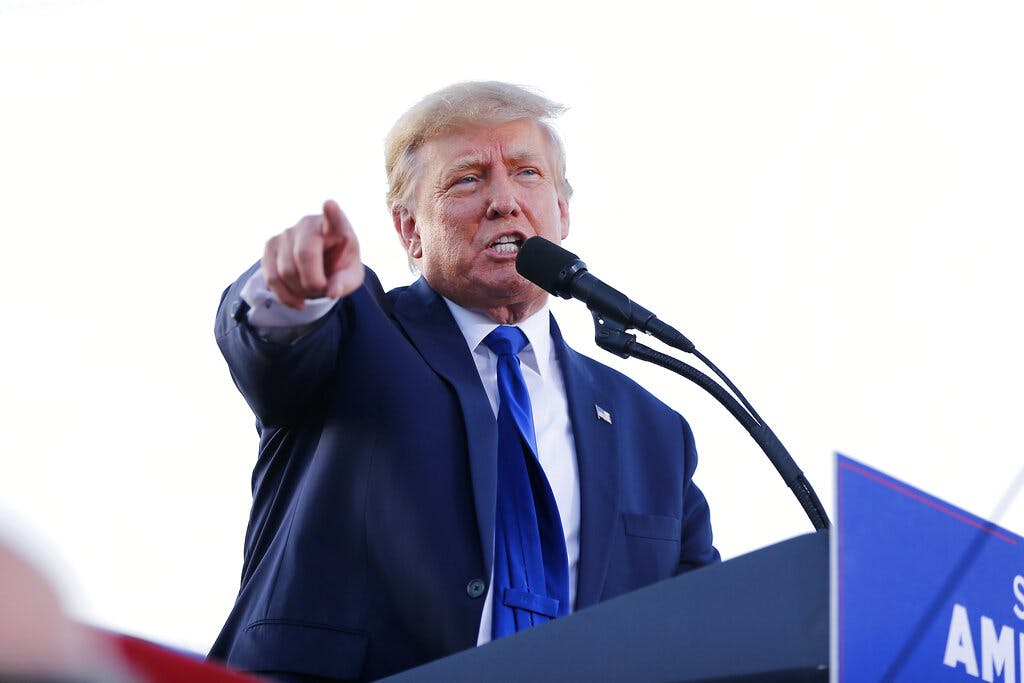Republican Primary Voters Repudiate Trump as GOP Enthusiasm Bodes Well
Republicans love leaders who take on the predominantly liberal media, but it wants them to be effective policymakers too, like Governor DeSantis, or Senator Cotton, or Vice President Pence.

Complete and utter repudiation. That’s what a record number of Republican primary voters in Georgia administered to President Trump this Tuesday. The man he blamed for not contesting his narrow 2020 loss in the state, Governor Kemp, won renomination with 74 percent of the vote.
The man he persuaded to get into the race, on the single issue of relitigating the 2020 election, Senator Perdue, won only 22 percent. Mr. Kemp didn’t just win far more than the 50 percent needed to avoid a runoff, he won more than 50 percent in 158 of Georgia’s 159 counties.
On top of that, the man Mr. Trump blamed even more than Kemp, Secretary of State Ben Raffensperger, was re-nominated with 52 percent of the vote. His Trump-endorsed opponent, Representative Jody Hice, carried only a few small counties outside his old congressional district.
Last week, based on the results from earlier primaries, I wrote that it’s “not exactly Trump’s party” anymore. This week’s results underline that. Republican primary voters are not Mr. Trump’s chess pawns, and Mr. Trump for that matter is nothing like a chess grandmaster.
The Republican Party, in the state where the issue was raised most vociferously, is a party ready to move on, beyond the 2020 election. It’s a party that loves leaders who take on the predominantly liberal media, but it wants them to be effective policymakers too, like Florida’s governor, Ron DeSantis, or Senator Cotton or Vice President Pence.
It’s a party that is also faring better than usual for an opposition party in the off year. Turnout in primaries is a good indicator of partisan enthusiasm. Less so in states with party registration, but even there Republicans ran well, winning 53 percent of the two-party primary vote last week in Pennsylvania and 55 percent in North Carolina, though Democrats have a 7-point edge in registration in Pennsylvania and a 4-point edge in North Carolina.
In states where voters are free to vote in either party’s primary, Republican majorities of two-party turnout were far greater — 67 percent in Texas on March 17, 65 percent in Ohio last week, 62 percent in Georgia and 79 percent in Alabama and Arkansas this week. Only in Oregon did Democrats outvote Republicans but by a narrower margin (55-45) than in the 2020 election (56-40).
The Georgia results do not bode well for the Democratic governor candidate Stacey Abrams, who claimed baselessly that she won the 2018 election, and for the charges — accepted and recounted as gospel by national Democrats and by Delta Air Lines, Coca-Cola and Major League Baseball corporate executives — that state Republicans’ changes in voting laws amounted to voter suppression. “Jim Crow on steroids,” in President Biden’s words.
But voter turnout was robust. Republican turnout nearly doubled, up 92 percent, from 2018, and Democratic turnout was up 28 percent. This ain’t what Jim Crow looked like in the pre-1965 Voting Rights Act Deep South.
It’s an example, rather, of an affliction common among high-education partisans of both parties. It’s what I call, turning Thorstein Veblen upside down, politics as the leisure of the theory class. It’s the cultivation of obsolete ancient grievances and the proclamation of unachievable goals.
So, you have the Democratic candidate for governor of Georgia campaigning against “voter suppression,” which hasn’t been a significant factor in more than 50 years. A white-majority congressional district in Georgia elected the black minister Andrew Young to Congress in 1972.
And you have Democrats like the Pennsylvania governor nominee, Attorney General Josh Shapiro, campaigning heavily on the abortion issue. That’s not entirely a theoretical matter. A Supreme Court reversal of Roe v. Wade, along the lines of Justice Samuel Alito’s draft opinion, would mean that Republicans in some states could ban abortions or, more likely, impose restrictions like those in much of Europe.
But the practical effect would be limited. My estimate is that most abortions would continue to be allowed in states where, according to the pro-abortion rights Guttmacher Institute, 75 percent to 80 percent of current abortions are performed.
As for Republicans, the theory pushed by Mr. Trump and some followers is that somehow the 2020 election result could be reversed. But the numbers in the ranks of that theory class seem to be dwindling, as voters focus on issues — inflation, immigration, crime — on which policy could make a difference.
Creators.com

